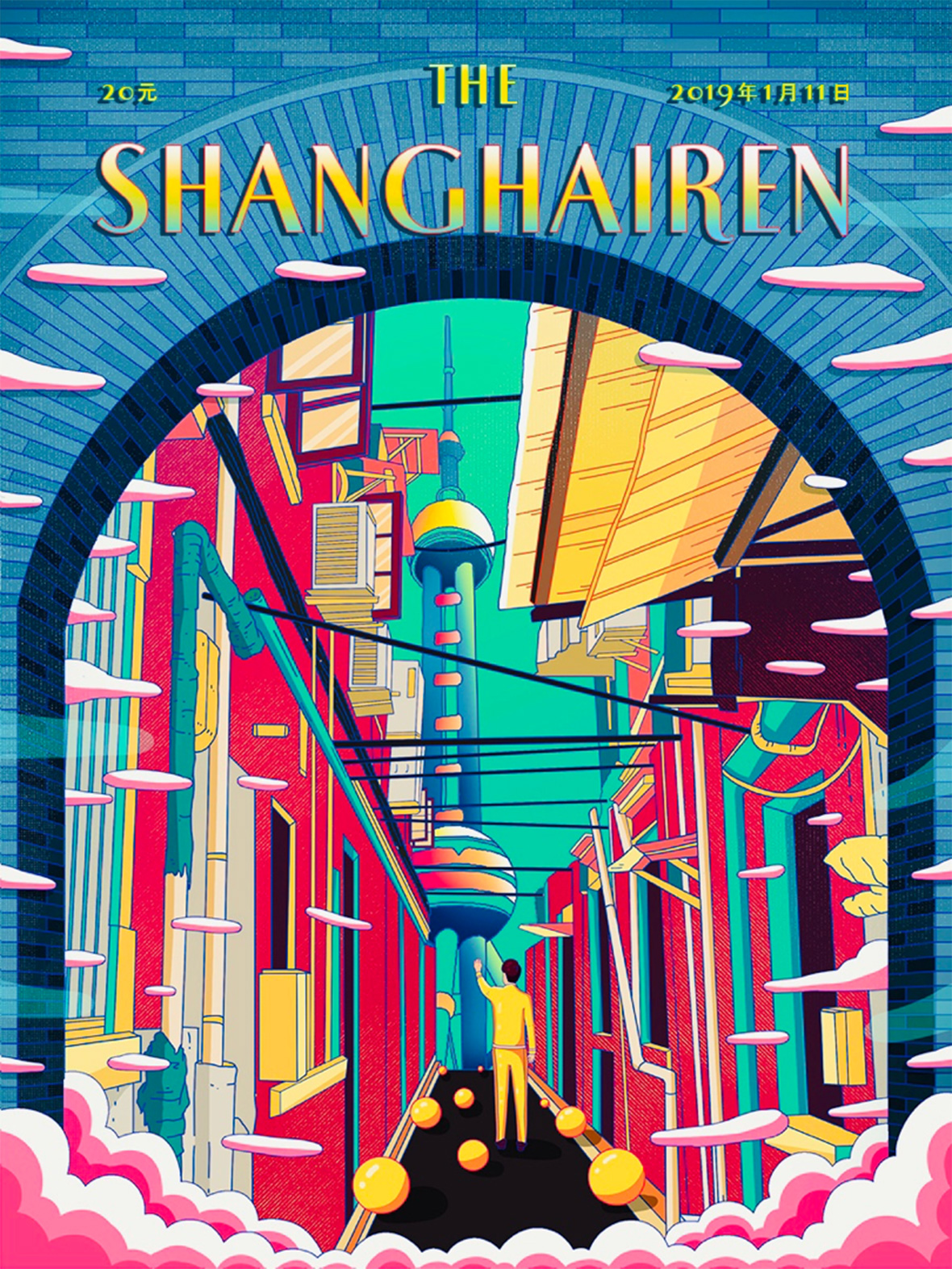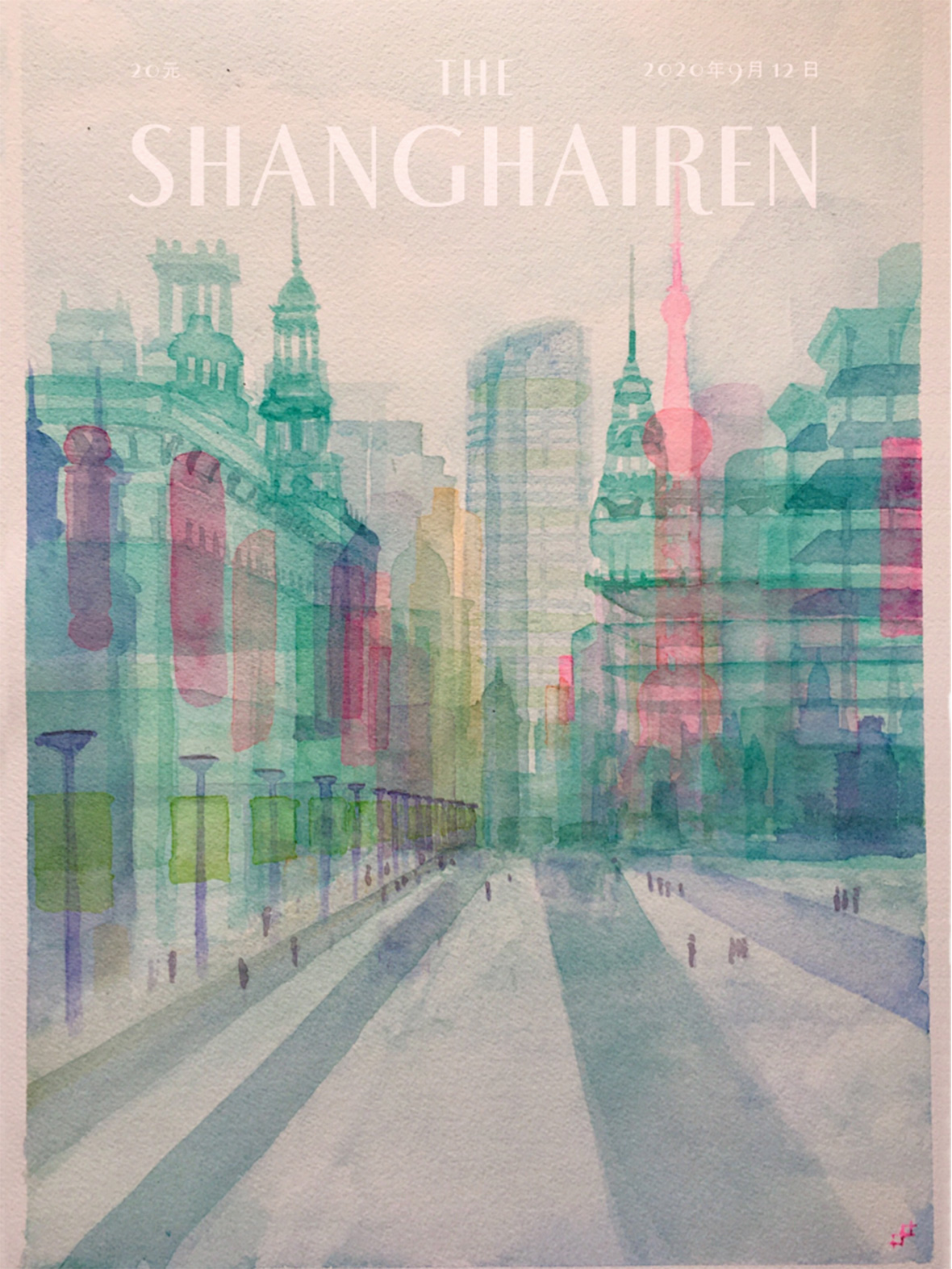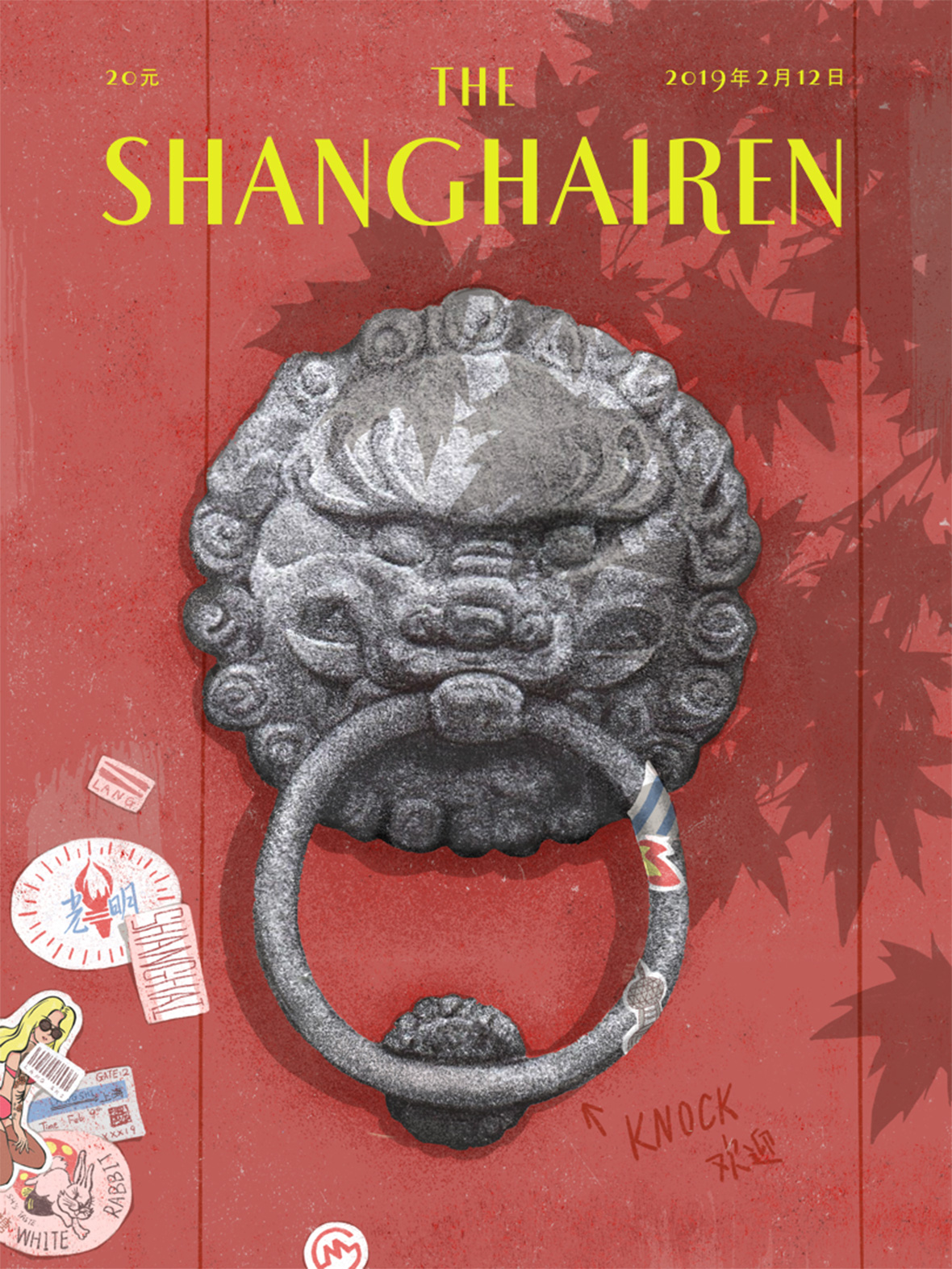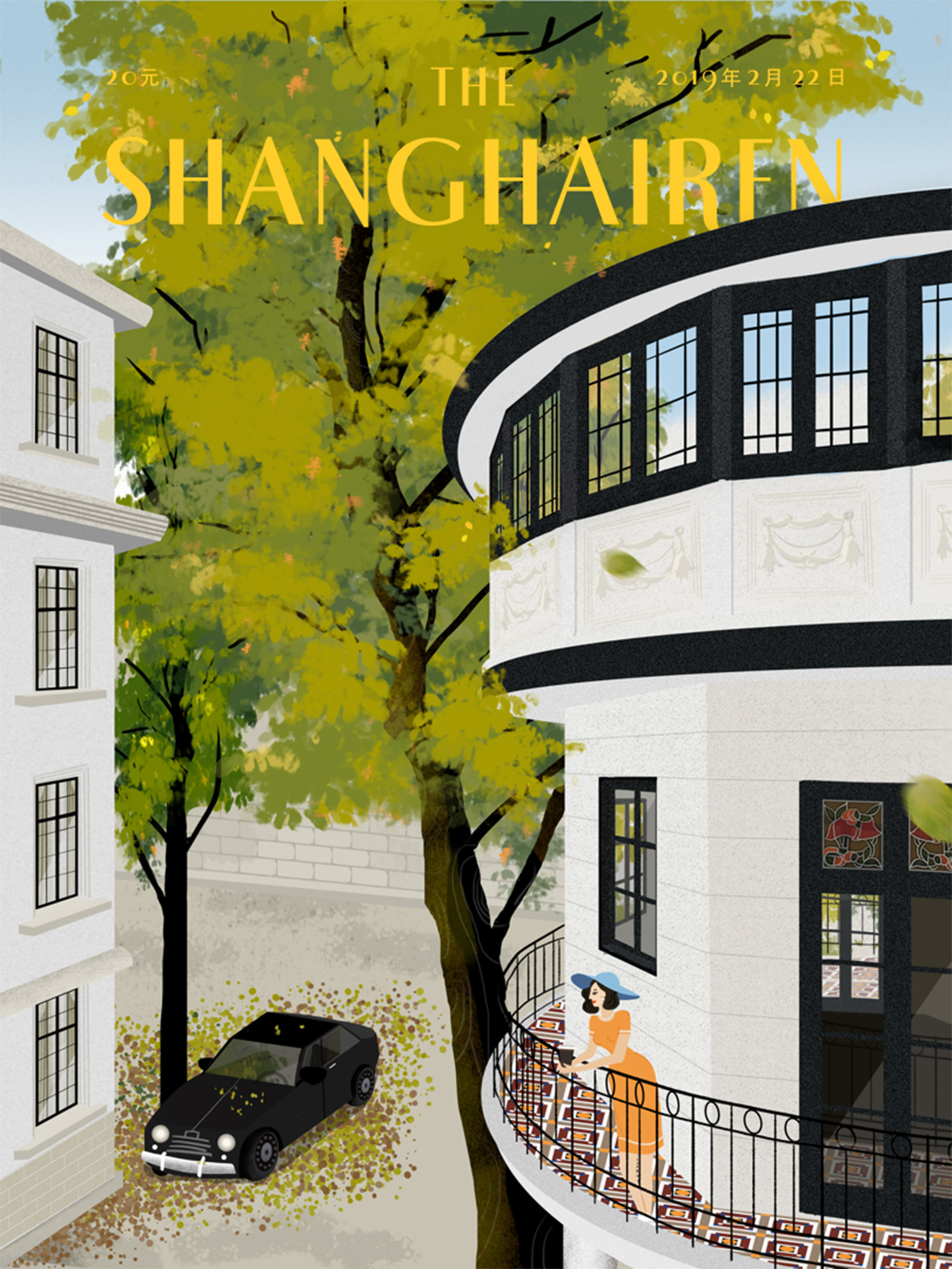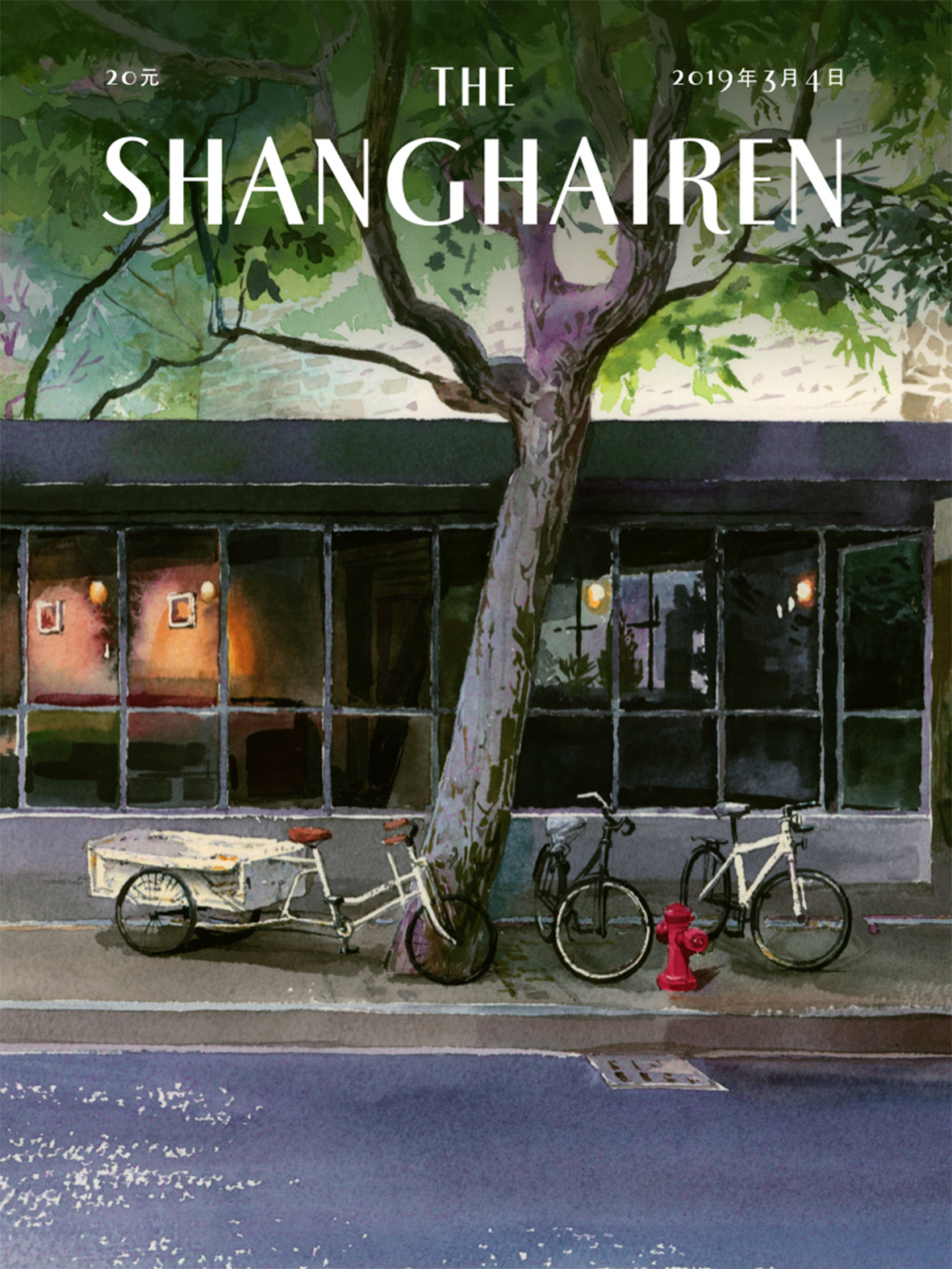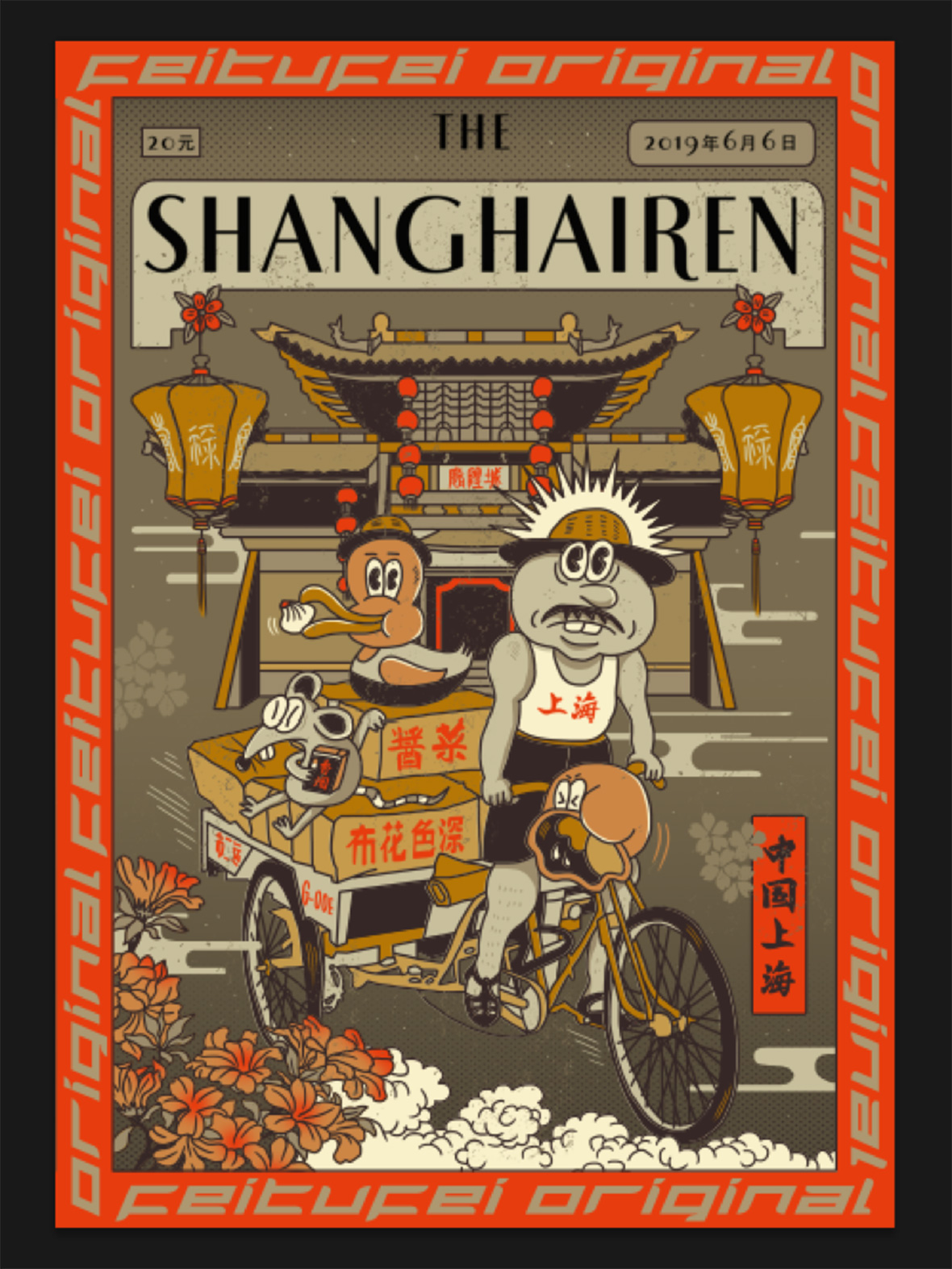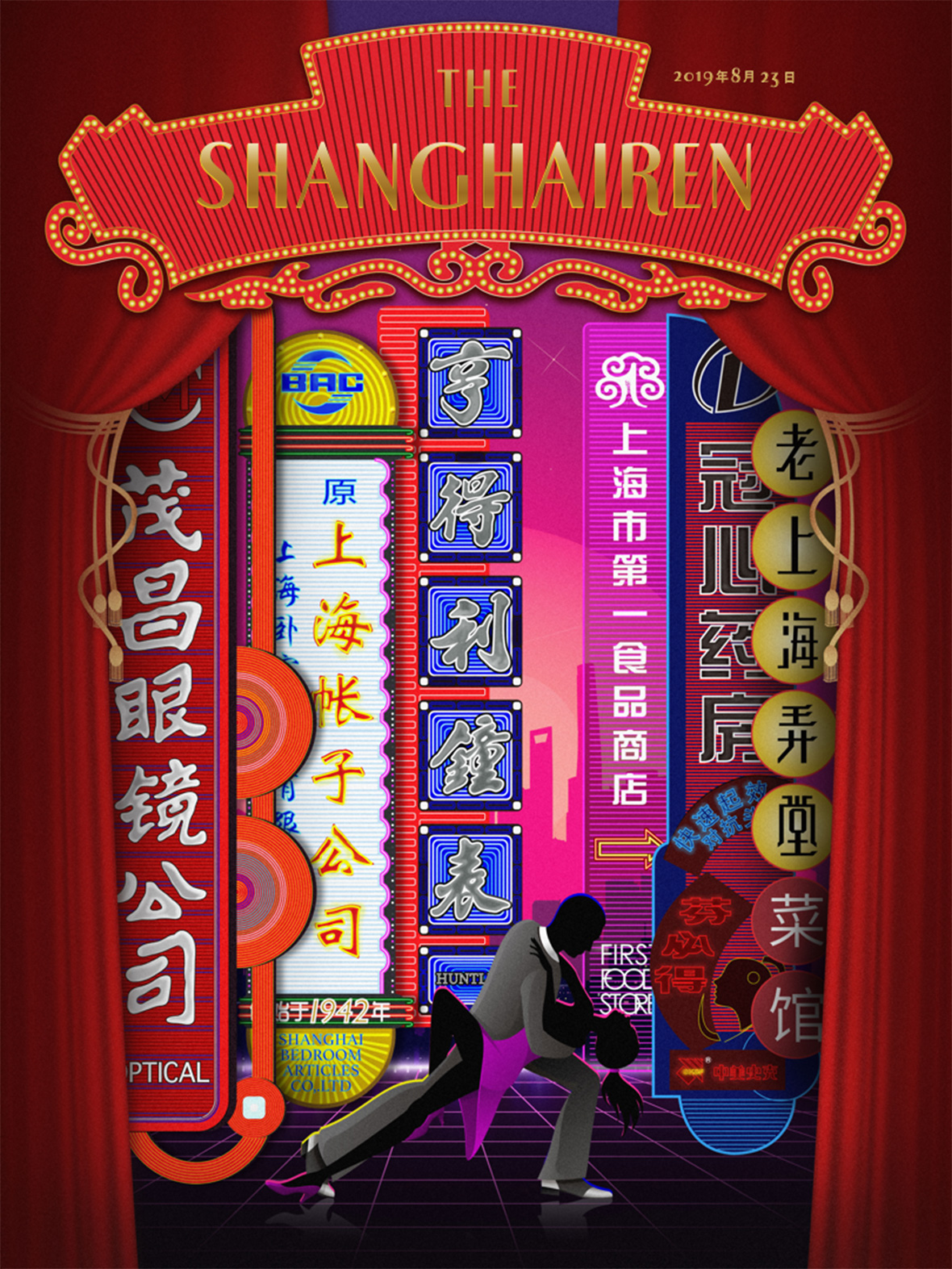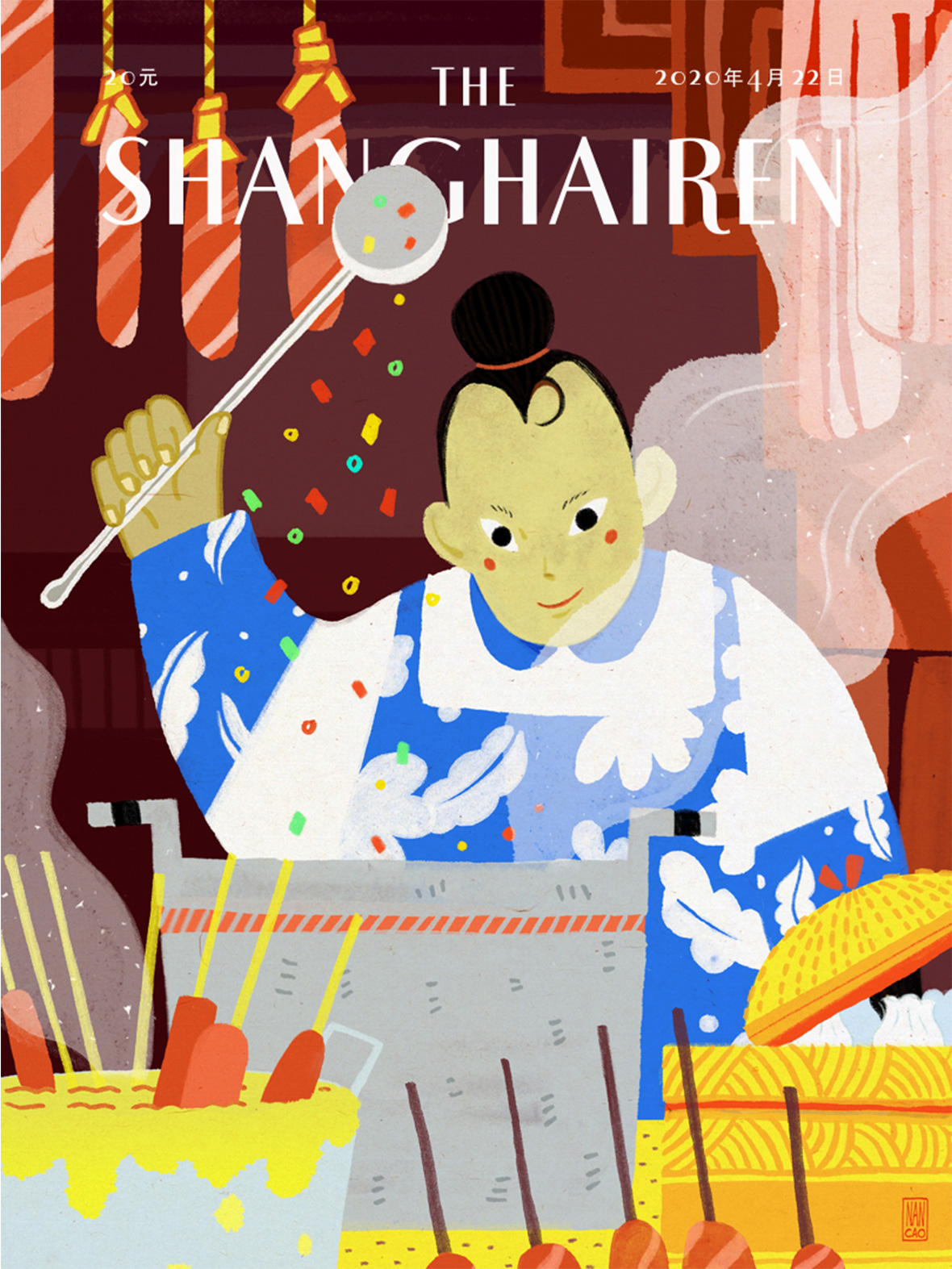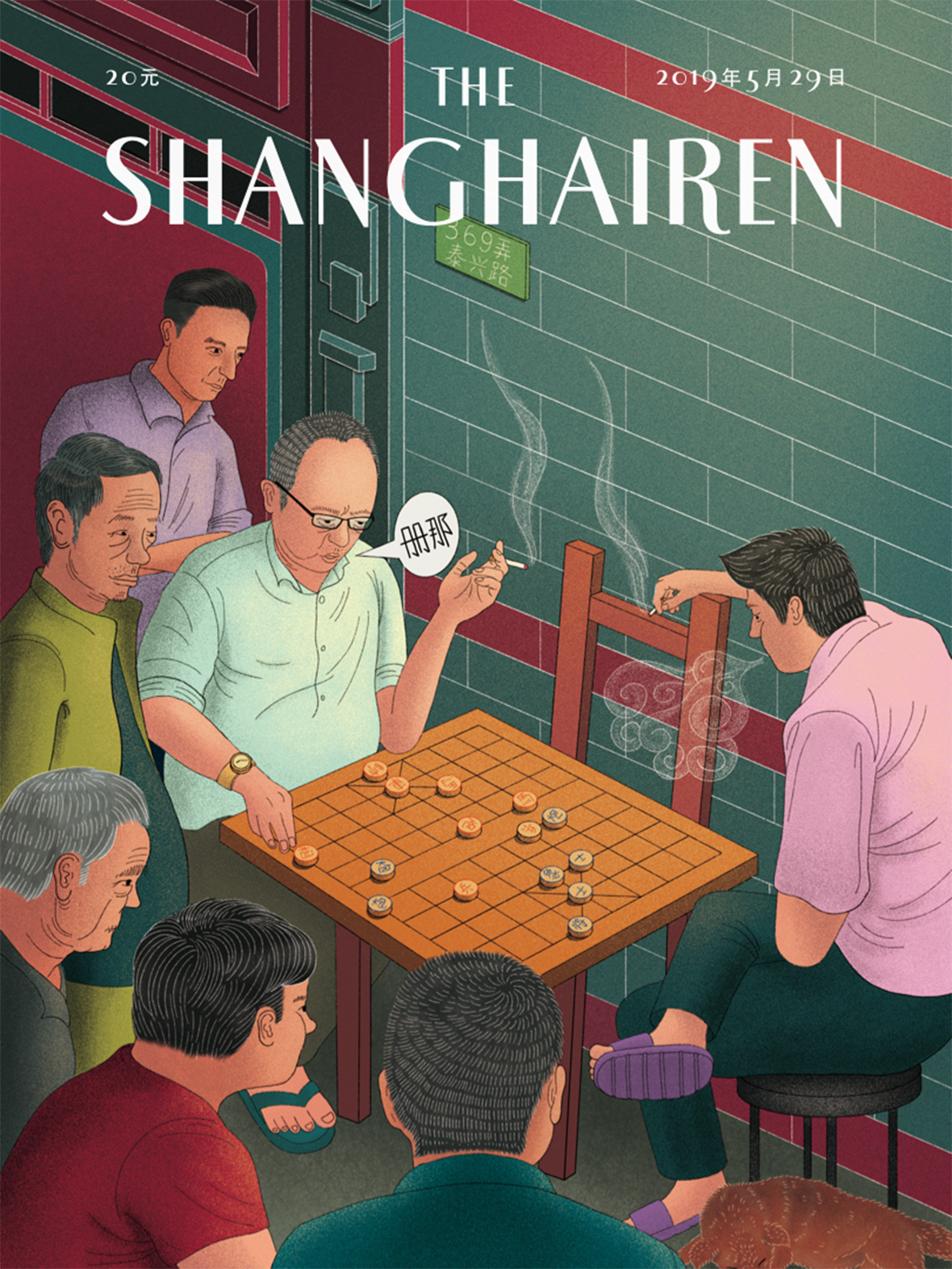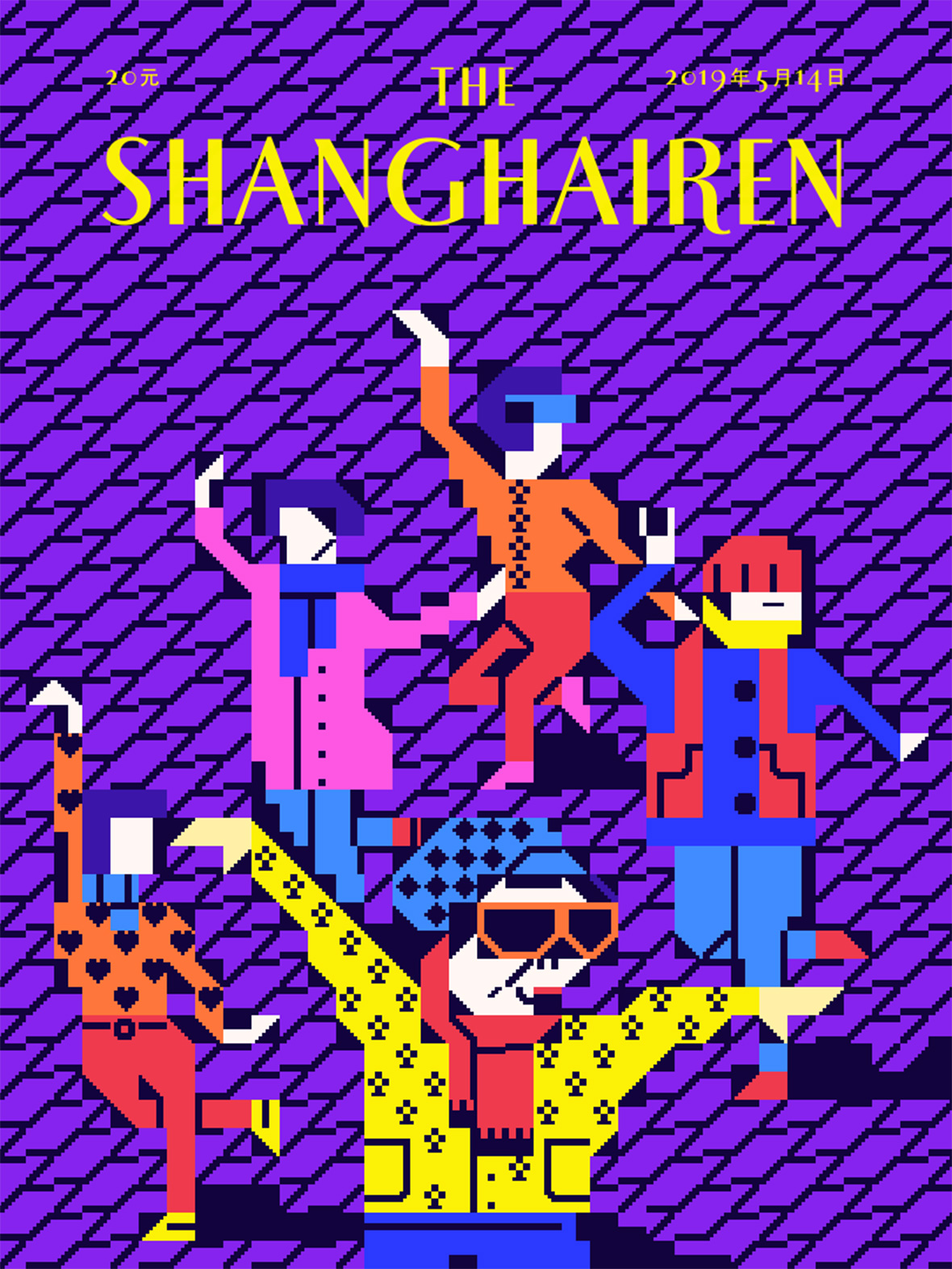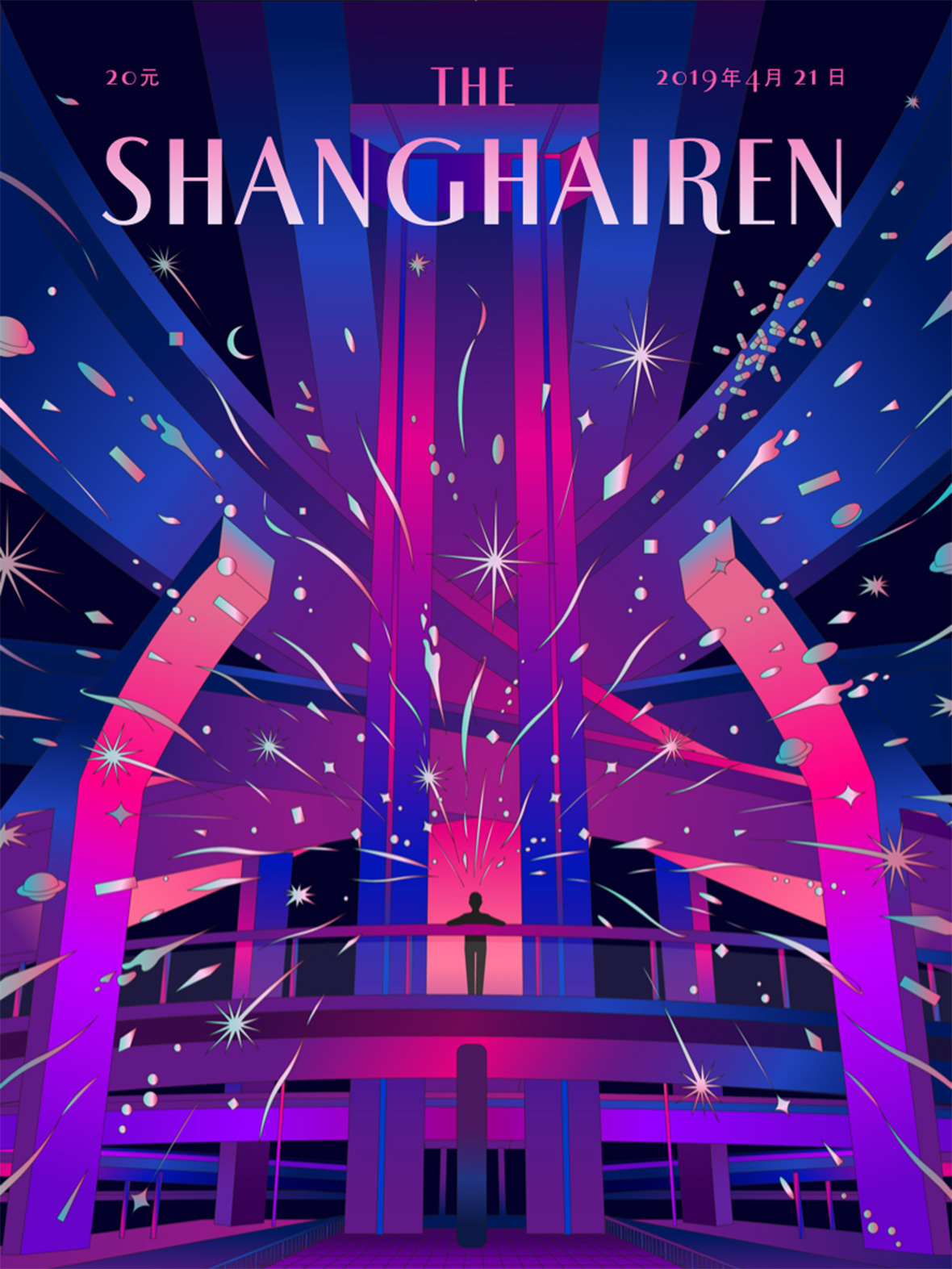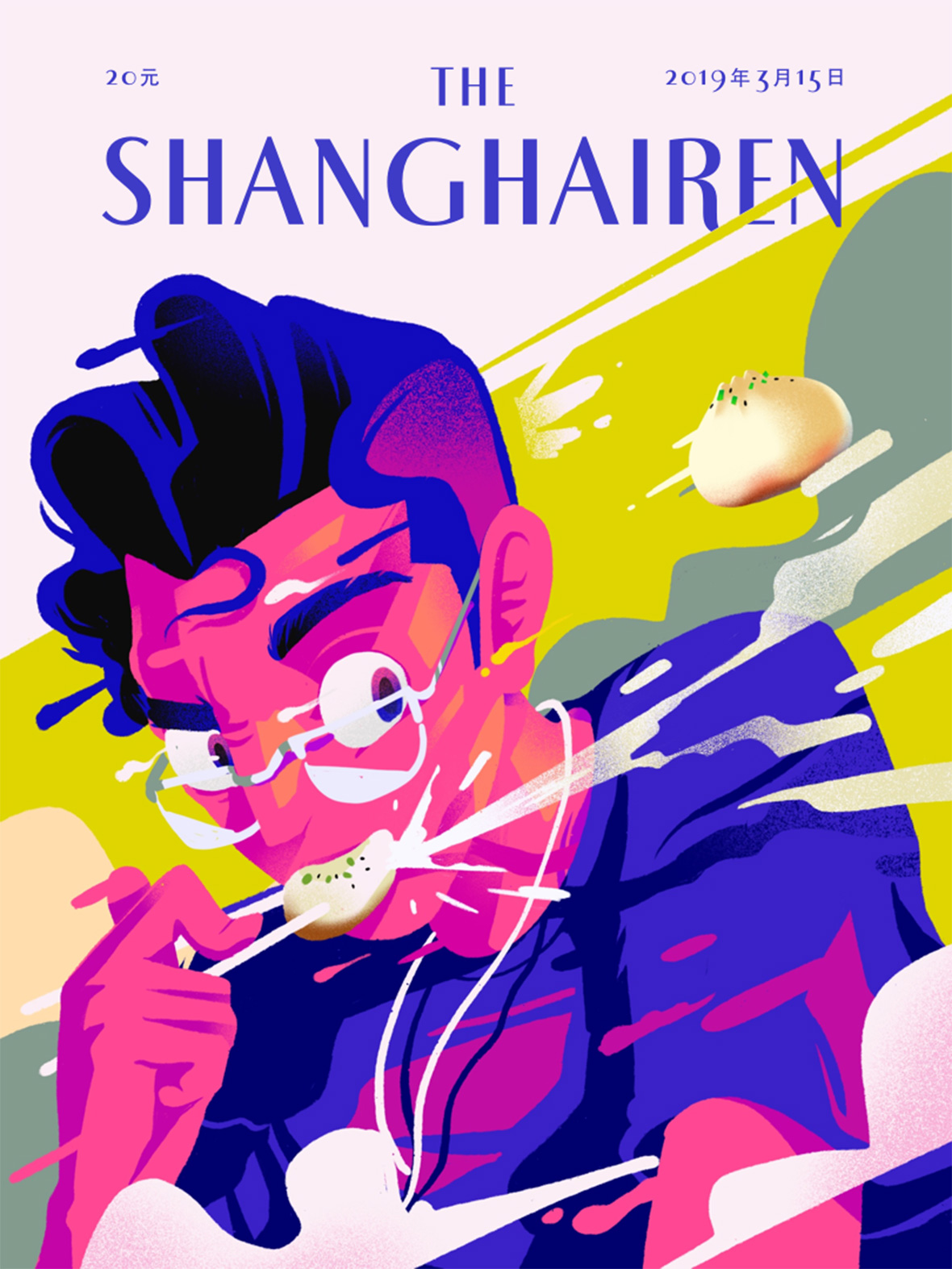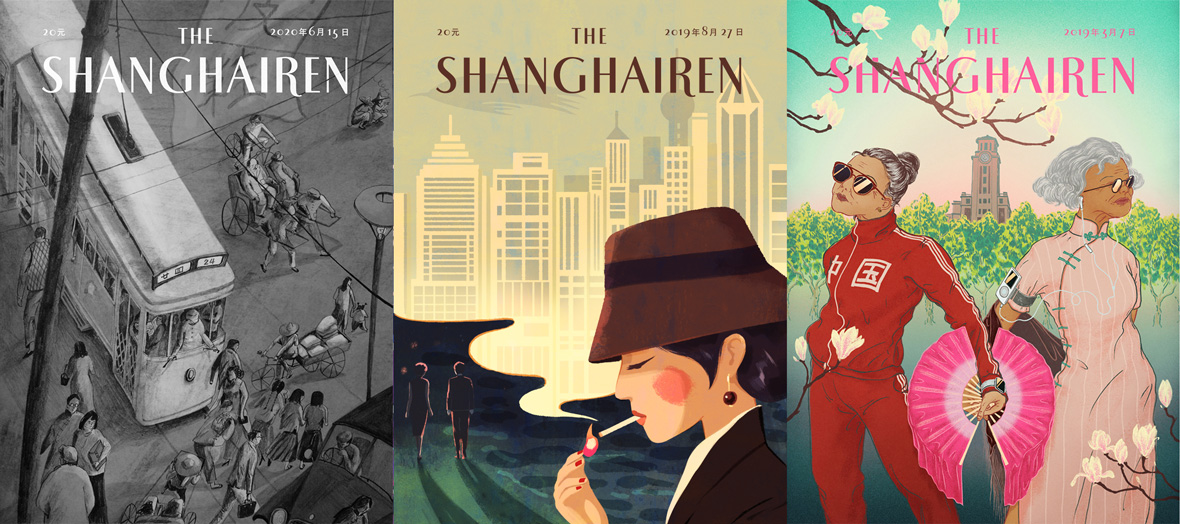
Twenty-six million and going strong, Shanghai is a sprawling metropolis where tradition and modernity coexist. Its residents, old and young, locals and outsiders, share a frantic pace of life, each with a take of what the city means to them.
Seven years after moving to the city, French creative director Benoit Petrus still has the same sensation he had the first day. “It’s the feeling of a constant flow of energy and movement. That’s what makes this city so unique,” he says. When he arrived, it surprised him to find a leafy city, a more bucolic scenery than the dense urban landscape he was expecting. To this date, he’s still fascinated by how the trees form a canopy over some streets, especially in the Xuhui district. If he were to illustrate a magazine cover celebrating the city, that would be the sight he’d choose.
However, instead of creating his own magazine cover, Petrus invited other creatives to do so. He asked artists, illustrators, and designers who hold a special bond with the city to draw their “Shanghai moment” as a single cover page with the title The Shanghairen. Over eighty covers later, in early 2021, Petrus published a book, a fine-binding anthology of all covers up to now. It’s an ode from creative souls to the city that breeds them.
上海是一座传统与现代融合的大都市,2600万的人口还在不断增加。无论男女老少、本地人和外地人,统统投身于疯狂的生活节奏中,每个人都在感受着这座城市对他们的意义。
对于旅居上海 7 年的法国创意总监 Benoit Petrus 来说,时至今日的他仍然保留着初见上海的那种感觉。“那是一种能量和活力在不断涌动、流动的感觉,也是这座城市的独特魅力。”他说。初到上海时,他惊奇地发现这里竟然是一座绿树成荫的城市,和他想象中高楼林立的城市景观相比,更有田园气息。直到现在,他仍然会为那些街道两旁的繁茂树荫而着迷,特别是在徐汇区。如果他要为这座城市画一幅杂志封面插图,这将是他的取景框。
然而,Benoit 并没有亲自创作杂志封面,而是找了其他创意人来画。他邀请了一众与上海有着各种渊源的艺术家、插画师和设计师,把各自的“上海印象”表达成插画封面,以《The Shanghairen 沪誌》为标题。在创作了超过 80 个封面后,2021 年初,Benoit 出版了一本精装画集,展示所有封面插画,作为创意群体对这座孕育他们的城市的颂歌。
The idea of The Shanghairen came to Petrus when he discovered The Tokyoiter, which follows the same concept but pays tribute to the Japanese capital. As Petrus found out, there was also The Parisiener, the first of the sorts to appear in 2012. It was followed by Le Montréaler and then The Tokyoiter. “I was mind blown by the concept. My immediate reaction was, why not do it for Shanghai?” he says.
Different versions of this simple concept have also popped up in other parts of the world. Sometimes it’s an initiative that comes from a single designer, and sometimes it’s a larger group project. The Bangkokian, The Brusseler, The Petersburger… All independent from each other, yet identical in essence—inspired by the artful covers of The New Yorker.
在看到《The Tokyoiter》(《东京客》)杂志时,Benoit 就萌生了推出《The Shanghairen 沪誌》的想法。这本杂志遵循同样的理念,旨在向日本的首都城市致敬。之后 Benoit 发现原来还有 2012 年就推出的《The Parisiener》(《巴黎客》),这是首次出现的此类杂志;之后又陆续出现了《Le Montréaler》(《蒙特利尔人》),“这个概念令我眼前一亮。我的第一反应是,为什么不做一本上海主题的呢?”Benoit 说道。
在世界各地,这一概念又衍生出很多不同的版本。有时候是设计师个人发起的倡议,有时则是一个更大型的群体项目,“曼谷人”、“布鲁塞尔人”、“彼得堡人”……它们彼此独立,却又一脉相连,灵感都来自《纽约客》杂志设计巧妙的封面。
As the idea grew, Petrus couldn’t stop wondering what stories the artists would develop to express their feelings for Shanghai. While talking to them, his briefing was minimal: they were tasked with creating their “Shanghai moment,” which he defines as something original and unique to the city. “I could have suggested interesting topics since there’s so much to tell about this city. But it’s more fun to let them surprise you. They’re making art, so I don’t interfere,” he says.
有了这个想法后,Benoit 很好奇每位艺术家会讲述什么样的故事来表达他们对上海的感情。他向艺术家们介绍项目时非常简单:创作属于他们的“上海印象”,即这座城市的独特之处。他说:“我当然也可以提议一些有趣的主题,毕竟这座城市值得一讲的东西太多了。但我更喜欢让他们给我惊喜,这样更有趣。他们是在创作艺术,所以我不会去干涉。”

The first cover came out in January 2019, created by illustrator Ju Lin who’s actually a Beijinger. She depicted a woman looking at her spectral reflection on the window with the night sky falling over Pudong’s barely lit skyscrapers. It’s an allegory to the often excruciating working hours and irregular shifts far too common due to the city’s relentless business activity.
The Shanghairen gained recognition in design and illustration circles. Petrus, who actively had to scout for artists to design covers at first, now receives submissions regularly. They come from everywhere in China, and sometimes from abroad. It’s a mixed assemblage that includes foreigners who live in Shanghai and Chinese expats, reflecting Shanghai’s diverse creative community and population, constantly in flux.
第一幅封面于 2019 年 1 月面世,由来自北京的插画师 Ju Lin 创作。她描绘了一个女人看着窗户上自己的映像,外面是昏暗夜空下的浦东摩天大楼。这幅插画表达了快节奏的城市商业活动所导致的畸形加班文化和不规律的工时现象。
《The Shanghairen 沪誌》在设计和插图界越来越受关注,Benoit 最初曾四处奔走来寻找艺术家设计封面,现在已经能定期收到投稿。稿件来自中国各地,有时也来自国外的艺术家,包括住在上海的外国人和在海外的中国人,这也折射出上海不断变化的多元化创意社区和人口。
“Most of the artists we feature are Chinese and based in Shanghai,” Petrus says. “Although, they’re not always Shanghainese. We’ve featured Chinese artists who study or work in the UK, US, and Europe. There are also people living in other major cities in China, such as Beijing, Chengdu, Nanjing. A few foreign artists are now living in different countries around the world too, after having lived in Shanghai.”
Benoit 说:“我们展示的作品大多数来自住在上海的中国艺术家,但不一定都是上海人,也会有在英国、美国和欧洲留学或工作的中国艺术家,或者是一些生活在其他中国城市的艺术家,如北京、成都和南京。还有一些是曾经在上海生活、现在移居世界各地的外国艺术家。”
Freelance illustrator Bowen Tan reflected on his childhood memories to create his cover. He depicted men playing xiangqi, or Chinese chess, a common sight in Shanghai. “Not everyone in the group would focus on the game,” Tan says. “Some of them prefer to chat about their lives. Others would stay quiet and just smoke.” Tan points out that gathering around a xiangqi board is a priceless moment to these men, a temporary escape from their domestic and work lives. Touchingly, he includes his own father in the picture, who had passed away a few years before.
Similarly, Italian designer Ailadi expressed her amusement while seeing the relationship that Shanghai residents have with public spaces. “Two chairs and one box are enough for people in Shanghai to sip tea while playing cards or chess as if they were at the seaside. A street corner or a square is perfect for them to dance together to the sound of traditional music, tango, or macarena,” she says.
Shane Li depicted an elevated highway in Shanghai commonly illuminated with neon lights to express the city’s essence. “These stunning structures are like blood vessels of this fast-paced and dynamic city,” he says.
Intimacy is a constant in the megacity. Changxin Lee‘s Shanghai moment reflects his experience living in one of Shanghai’s traditional alleyways, where, when the sun is out, there’s always laundry hanging up in public. Trousers, shirts, socks, underwear, blankets, sheets, and shoes.
Shane Li 描绘的是上海一条布满霓虹灯的高架公路,以此表达这座城市的本质。“这些令人惊叹的宏伟建筑结构仿佛是这座快节奏、活力四溢的城市的动脉。”他解释道。
在这座特大城市里,亲密是自然而然的事情。Changxin Lee所画的上海印象来自他所生活的上海传统里弄。每当太阳出来,大家都会把洗好的衣服放在外面晾晒:裤子、衬衫、袜子、内裤、毯子、床单和鞋子,各式各样。
Perhaps the dish best associated with Shanghai is the xiaolongbao, a steamed bun that’s more like a sack of soup. It almost requires technique to be eaten. Sometimes, when you bite it, boiling soup spills everywhere. That’s what illustrator Peter Zhang used for his Shanghai moment. “As a fan of xiaolongbao, I’ve had countless embarrassing and messy situations. My cover captures the moment when you take a bite of it, half nervous about the mess; half excited for the delicious taste to come,” he says.
From Hangzhou, Karen Yao depicts the infamous marriage market of People’s Square Park. There, elderly parents gather to find spouses for their unmarried children. “Often, marriage here is not based on love,” she explains. “Age, income, education levels, and other similar aspects are more important.” In the market, parents advertise their children, highlighting, beyond their physical attributes, their monthly salary, what car they drive, and their housing conditions. Her cover expresses the dichotomy of modern Shanghai, where traditional values are still predominant in love and marriage.
说到上海菜,人们首先想到的都是小笼包,一种装满汤汁的包子。吃小笼包也要讲究技巧,否则一口咬下去,沸腾的汤汁就会洒得到处都是——这正是插画家咖喱牛(Peter Zhang) 所画的上海印象。他说:“作为一名小笼包爱好者,我经历过无数尴尬和混乱的场面。我的封面画的正是一口咬下小笼包的瞬间,一半是担心汤汁乱溅的紧张,一半是对美味入口的期待。”
来自杭州的 Karen Yao 画的是为人熟知的人民广场公园相亲角。在那里,年迈的父母聚在一起,为自己的单身子女找对象。她解释说:“这里的婚姻往往不是建立在爱情的基础上。年龄、收入、教育程度和其他方面显得更重要。”在相亲角里,父母给孩子做广告,除了身体条件,还会强调他们的收入,开什么车,住什么样的房子。她的封面旨在表达现代上海的两极分化——在爱情和婚姻中,传统价值观仍然占主导地位。
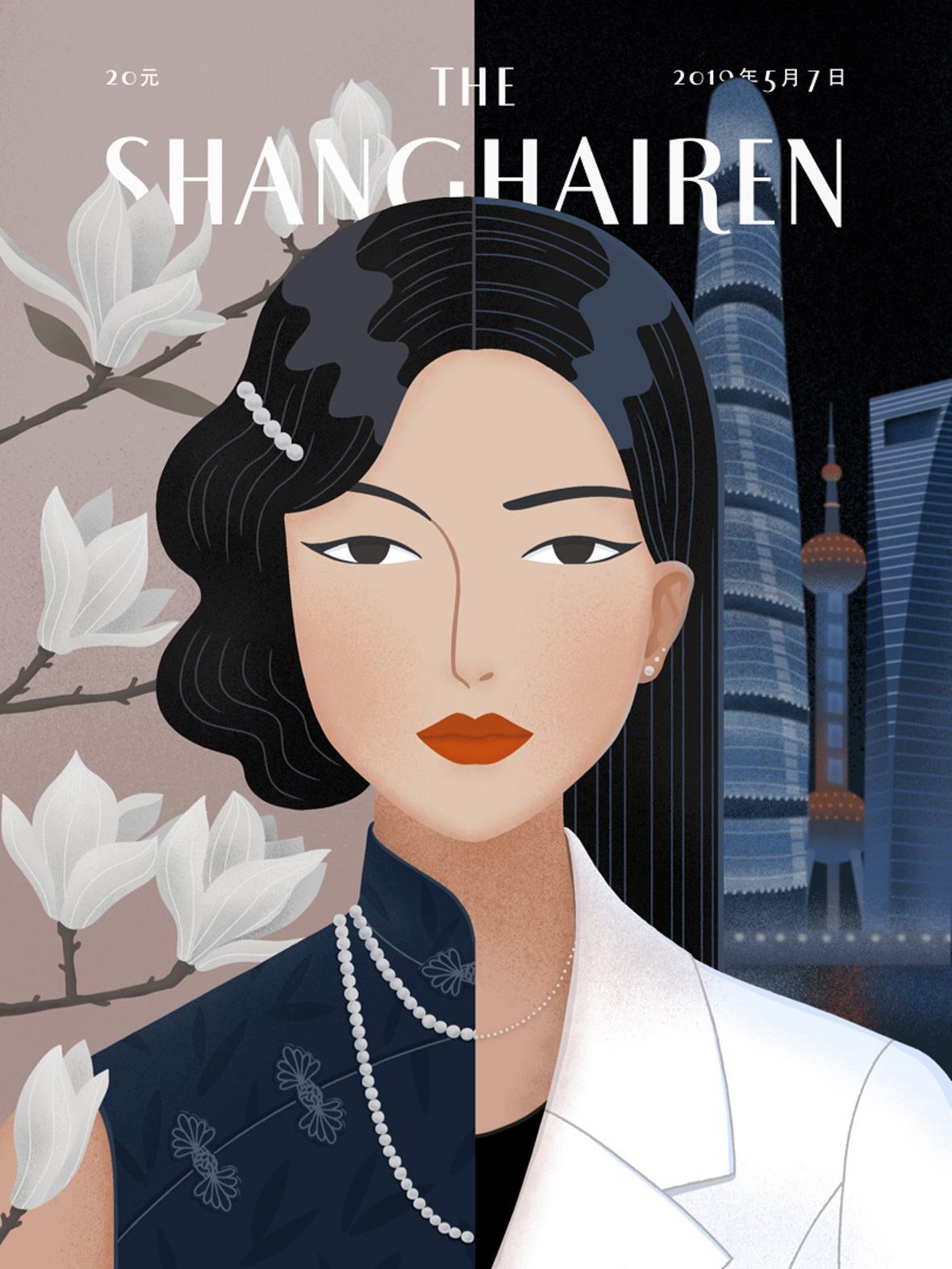
As covers piled up, Petrus noticed recurrent elements. Some iconic ones: the Pearl Tower, the qipao, the yulan magnolia. But one thing was particularly noticeable. “I found that most illustrators chose to depict women as their cover hero; men have smaller roles,” he says.
The cover that he chose for the book is an illustration by Xin Yin, also from Hangzhou. It’s the bipartite representation of a young woman. On one side, she wears a qipao, a pearl necklace, and short waved hair in the 1920s style. In the background, the magnolia flower, a symbol of elegance and gentleness. This side represents the golden age of Shanghai, a cosmopolitan city at the forefront of design, fashion, and architecture. On the other side, she wears a white business suit and her hair straight and long. In the background, the skyline of Pudong, the symbol of China’s financial powerhouse. The woman gazes back at us placidly, resolute, empowered—as the multifaceted old city itself.
随着收集的封面越来越多,Benoit 注意到了一些最常出现的元素,包括标志性的东方明珠塔、旗袍和玉兰花。除此之外,还有一点尤其引人注目。Benoit 说:“我发现大多数插画师都选择把女性作为自己的封面主角,而男性人物往往更不起眼一些。”
他为这本画集选择的封面是同样来自杭州的尹昕创作的插图,那是一个分饰两角的年轻女性:一边的她身穿旗袍,戴着珍珠项链,梳着1920年代的波浪短发,背景是象征优雅和温柔的玉兰花,这一面代表了上海的黄金时代,一个引领设计、时尚和建筑最前沿的国际大都市。而在另一边,她穿着白色的商务套装,一头长真黑发,背景是作为中国金融中心的浦东摩天大楼。封面中的她平静、坚定、自信地直视观众,一如这座多姿多彩的古老城市。
Like our stories? Follow us on Facebook and Instagram.
Website: www.theshanghairen.com
Instagram: @the_shanghairen
Contributors: Tomas Pinheiro, Lucas Tinoco
Chinese Translation: Olivia Li
网站: www.theshanghairen.com
Instagram: @the_shanghairen
供稿人: Tomas Pinheiro, Lucas Tinoco
英译中: Olivia Li

